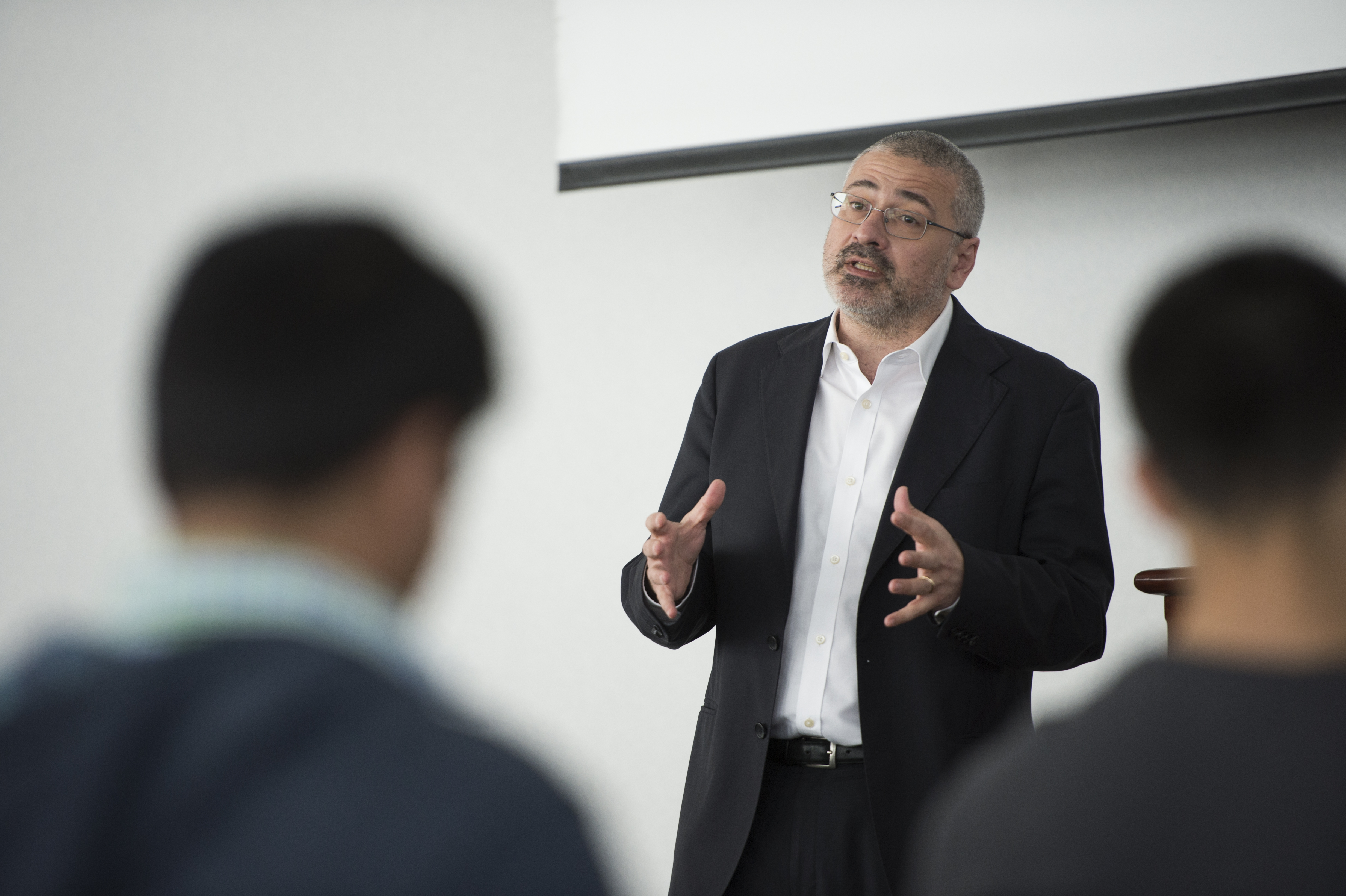by Joe O’Connell
When it comes to fighting diseases in the 21st century, Big Data is becoming an integral weapon. At the forefront of this battle is world-renowned network scientist Alessandro Vespignani, who is using Big Data to predict a pandemic’s progression.
Vespignani, the Sternberg Family Distinguished University Professor of Physics, Computer Science, and Health Sciences at Northeastern, recently discussed the ways his MoBS Lab is using all types of data—from flight patterns to mobile phone information—to determine the spread of a disease.
His talk on Monday afternoon, which was held in the Raytheon Amphitheater, was part of the “Minds over Matters: NUterm Faculty Speaker Series.” The series features weekly presentations from top faculty scholars who discuss their research and examine innovation, new discoveries, and timely topics of global importance.
Here are five things we learned from Vespignani’s lecture:
Get on a microscopic level
The best way to develop a model that projects future trends, Vespignani explained, is to look at a system on the microscopic scale. By following a single individual—where she goes during the day, how she gets there, and with whom she interacts —Vespignani and fellow network scientists can create a large-scale simulation of the evolution of a disease.
Transportation has greatly changed how disease is spread
When the Black Death was spreading through Europe in the 14th century, its only means of mobility was via infected people traveling to nearby villages for trade. That, Vespignani said, created a “wave” showing how the disease spread at different velocities based on where people traveled.
Nowadays, due to planes, trains, and other modes of transportation, epidemics like the SARS outbreak in the early 2000s travel much quicker and in point-to-point fluxes.
Behavioral change is a major hurdle
Human behavior, Vespignani said, is a significant barrier to developing accurate prediction models. Once a disease starts to spread, humans change their day-to-day behavior to avoid infection, which impacts the accuracy of predictions.
“In a place like the U.S., the behavior would change so drastically that our model would probably struggle to get some realistic feedback in the system,” Vespignani explained. “You have this loop you need to close in which the predictive system is part of the effects you need to predict.”
More than just predicting diseases
To close his talk, Vespignani explained that his lab’s forecasting model can be used for other systems as well. In today’s society, he said, ideas and political preferences can spread through social media just like diseases spread through nature.
“Everything has a spreading process,” Vespignani noted, “and when we look at the contagion process, rather than following an individual we follow an event.”
Culling from Big Data
During a Q&A with the audience, Vespignani was asked to describe his strategy for culling data from the mountains of available information. He noted that it depends on the questions the scientist is asking. “There is no recipe,” he said. “You really have to figure it out case by case.”

